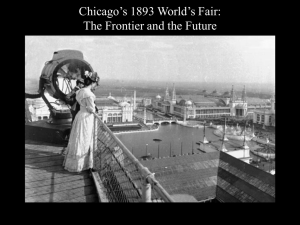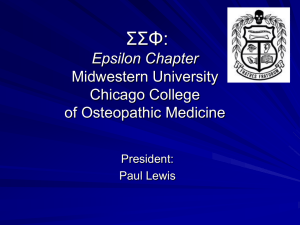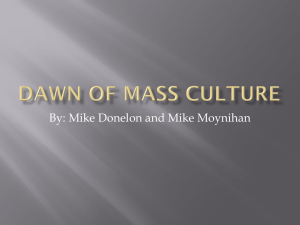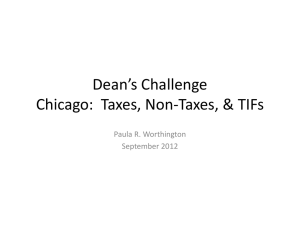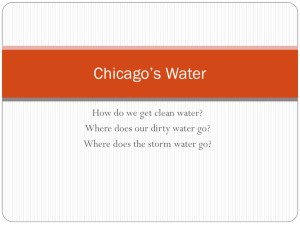Oral Health Promotion in Chicago Public Schools
advertisement
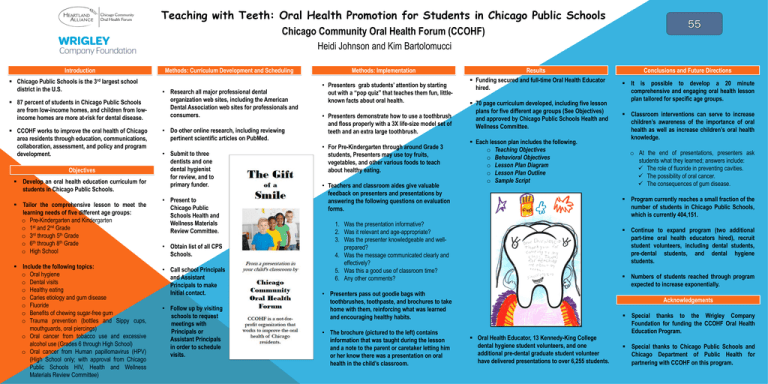
Teaching with Teeth: Oral Health Promotion for Students in Chicago Public Schools Chicago Community Oral Health Forum (CCOHF) Heidi Johnson and Kim Bartolomucci Introduction Chicago Public Schools is the 3rd largest school district in the U.S. 87 percent of students in Chicago Public Schools are from low-income homes, and children from lowincome homes are more at-risk for dental disease. CCOHF works to improve the oral health of Chicago area residents through education, communications, collaboration, assessment, and policy and program development. Objectives Develop an oral health education curriculum for students in Chicago Public Schools. Tailor the comprehensive lesson to meet the learning needs of five different age groups: o Pre-Kindergarten and Kindergarten o 1st and 2nd Grade o 3rd through 5th Grade o 6th through 8th Grade o High School Include the following topics: o Oral hygiene o Dental visits o Healthy eating o Caries etiology and gum disease o Fluoride o Benefits of chewing sugar-free gum o Trauma prevention (bottles and Sippy cups, mouthguards, oral piercings) o Oral cancer from tobacco use and excessive alcohol use (Grades 6 through High School) o Oral cancer from Human papillomavirus (HPV) (High School only; with approval from Chicago Public Schools HIV, Health and Wellness Materials Review Committee) Methods: Curriculum Development and Scheduling • Research all major professional dental organization web sites, including the American Dental Association web sites for professionals and consumers. • Do other online research, including reviewing pertinent scientific articles on PubMed. • Submit to three dentists and one dental hygienist for review, and to primary funder. • Present to Chicago Public Schools Health and Wellness Materials Review Committee. • Obtain list of all CPS Schools. • Call school Principals and Assistant Principals to make Initial contact. • Follow up by visiting schools to request meetings with Principals or Assistant Principals in order to schedule visits. Methods: Implementation • Presenters grab students’ attention by starting out with a “pop quiz” that teaches them fun, littleknown facts about oral health. • Presenters demonstrate how to use a toothbrush and floss properly with a 3X life-size model set of teeth and an extra large toothbrush. • For Pre-Kindergarten through around Grade 3 students, Presenters may use toy fruits, vegetables, and other various foods to teach about healthy eating. • Teachers and classroom aides give valuable feedback on presenters and presentations by answering the following questions on evaluation forms. Results Funding secured and full-time Oral Health Educator hired. 70 page curriculum developed, including five lesson plans for five different age groups (See Objectives) and approved by Chicago Public Schools Health and Wellness Committee. Each lesson plan includes the following. o Teaching Objectives o Behavioral Objectives o Lesson Plan Diagram o Lesson Plan Outline o Sample Script It is possible to develop a 20 minute comprehensive and engaging oral health lesson plan tailored for specific age groups. Classroom interventions can serve to increase children’s awareness of the importance of oral health as well as increase children’s oral health knowledge. o At the end of presentations, presenters ask students what they learned; answers include: The role of fluoride in preventing cavities. The possibility of oral cancer. The consequences of gum disease. Program currently reaches a small fraction of the number of students in Chicago Public Schools, which is currently 404,151. 1. Was the presentation informative? 2. Was it relevant and age-appropriate? 3. Was the presenter knowledgeable and wellprepared? 4. Was the message communicated clearly and effectively? 5. Was this a good use of classroom time? 6. Any other comments? Continue to expand program (two additional part-time oral health educators hired), recruit student volunteers, including dental students, pre-dental students, and dental hygiene students. Numbers of students reached through program expected to increase exponentially. • Presenters pass out goodie bags with toothbrushes, toothpaste, and brochures to take home with them, reinforcing what was learned and encouraging healthy habits. • The brochure (pictured to the left) contains information that was taught during the lesson and a note to the parent or caretaker letting him or her know there was a presentation on oral health in the child’s classroom. Conclusions and Future Directions Acknowledgements Oral Health Educator, 13 Kennedy-King College dental hygiene student volunteers, and one additional pre-dental graduate student volunteer have delivered presentations to over 6,255 students. Special thanks to the Wrigley Company Foundation for funding the CCOHF Oral Health Education Program. Special thanks to Chicago Public Schools and Chicago Department of Public Health for partnering with CCOHF on this program.

